Discover a comprehensive collection of UPSC Prelims Topic Wise Questions focusing on Basic Numeracy, specifically exploring Plane Geometry and Mensuration. Dive into a diverse array of questions meticulously crafted to enhance your understanding and preparation for the UPSC Preliminary examination in these fundamental mathematical concepts. This resource offers a structured approach to mastering key principles and techniques essential for solving problems related to plane geometry and mensuration. Whether you’re a beginner looking to build foundational knowledge or an advanced candidate aiming to refine your skills, these questions provide valuable insights and practice opportunities. With a strategic emphasis on topic-wise questions, aspirants can sharpen their problem-solving abilities and develop a deeper comprehension of geometric and mensuration concepts. Elevate your preparation, grasp essential insights, and optimize your performance in the UPSC Prelims with proficiency in solving problems related to plane geometry and mensuration within the realm of basic numeracy.
Contents
- 1 Q1. In track meets, both 100 yards and 100 m are used as distances. By how many metres is 100 m longer than 100 yards? (1995)
- 2 Q2. A rectangular sump of dimension 6m x 5m x 4m is to be built by using bricks to make the outer dimension 6.2 m x 5.2 m x 4.2 m. Approximately how many bricks of size 20 cm x 10 cm x 5cm are required to build the sump for storing water? (1995)
- 3 Q3. Consider the figure given below: (1995)
- 4 Q4. In the Cartesian plane four points P, Q, R, S have co-ordinates (1, 1), (4, 2), (4, 4) and (1, 4) respectively. The area of the quadrilateral PQRS is (1995)
- 5 Q5. X and Y are two variables whose values at Y time are related to each other as shown in Fig. (i). X is known to vary periodically with reference to time as shown in Fig. (ii) (1995)
- 6 In case you still have your doubts, contact us on 9811333901.
Q1. In track meets, both 100 yards and 100 m are used as distances. By how many metres is 100 m longer than 100 yards? (1995)
(a) 0.856 m
(b) 8.56 m
(c) 0.0856 m
(d) 1.0 m
Ans. (b)
We know that,
1 yard=36 inch
1 inch=2.54 cm
1 yard = 2.54 x 36 cm
According to the question,
100 yard =2.54 x 36 x 100 = 9144 cm or 91.44 m
100m is longer than 100 yard by 100-91.44 m = 8.56 m
Hence, option (b) is correct.
Q2. A rectangular sump of dimension 6m x 5m x 4m is to be built by using bricks to make the outer dimension 6.2 m x 5.2 m x 4.2 m. Approximately how many bricks of size 20 cm x 10 cm x 5cm are required to build the sump for storing water? (1995)
(a) 15408
(b) 3000
(c) 15000
(d) 3000
Ans. (a)
Volume of of sump = 6.2 x 5.2×4.2 = = 135.408m3
Volume needed to built by the bricks = 135.408-120 = = 15.408m3 = = 15.408 x 100 x 100 x 100cm3
Volume of one brick = 20 x 10 x 5 = 1000 cm³
Required number of bricks = 15.408 x 1000000/1000 = 15408
Q3. Consider the figure given below: (1995)
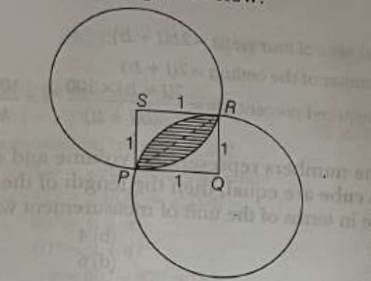
PQRS is a square of side 1 unit and Q, S are the centres of the two circles. The area of the shaded portion is
(a) π/2
(b) 1/2
(c) (π/4) – 1/2
(d) (π/2) – 1
Ans. (d)
Area of shaded portion = 2 x Area of segment corresponding to sector POR
= 2 x r2(θ/360° x π – sin(θ/2)cos(θ/2))
= 2 x 12(90°/360° x π – sin(90°/2)cos(90°/2))
= 2(π/4 – 1/2) = π/2 –
Q4. In the Cartesian plane four points P, Q, R, S have co-ordinates (1, 1), (4, 2), (4, 4) and (1, 4) respectively. The area of the quadrilateral PQRS is (1995)
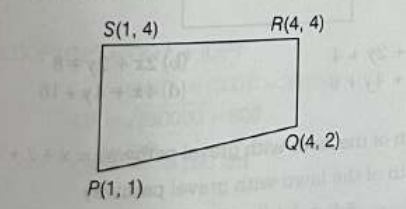
(a) 9
(b) 7.5
(c) 4.5
(d) Can’t be determined unless the length of the diagonals are known
Ans. (b)
Area of quadrilateral PQRS = Area of △SQR

Area of △PSQ
= 1/2 | x1(y2 – y3) + x2(y3 – y1) + x2(y1 – y2)|
= 1/2 | 1 x (4 – 2) + 1 x (2 – 1) + 4 x (1 – 4)|
= 1/2 | 2 + 1 – 12 | = 1/2| -9 | = 9/2 = 4.5
Area of △SQR = 1/2 | 1 x (2 – 4 ) + 4(4 – 4) + 4(4 – 2 ) |
= 1/2| -2 + 0 + 8 | = 6/2 = 3
Area of quadrilateral PQRS = 4.5 + 3 = 7.5
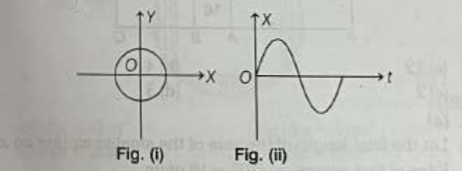
Which of the following curves depicts correctly the dependence of Y on time?
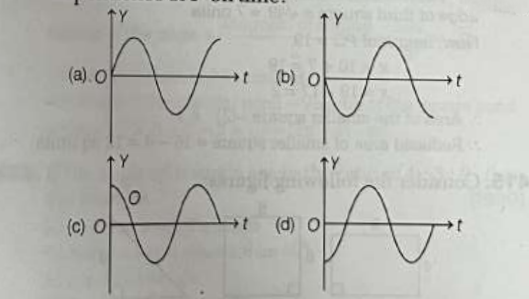
Ans. (c)
Let the radius of the circle be unity.
We know that, equation of the circle, x² + y² = 1
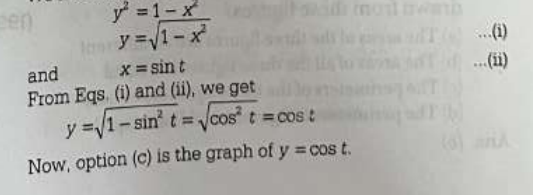
In case you still have your doubts, contact us on 9811333901.
For UPSC Prelims Resources, Click here
For Daily Updates and Study Material:
Join our Telegram Channel – Edukemy for IAS
- 1. Learn through Videos – here
- 2. Be Exam Ready by Practicing Daily MCQs – here
- 3. Daily Newsletter – Get all your Current Affairs Covered – here
- 4. Mains Answer Writing Practice – here

